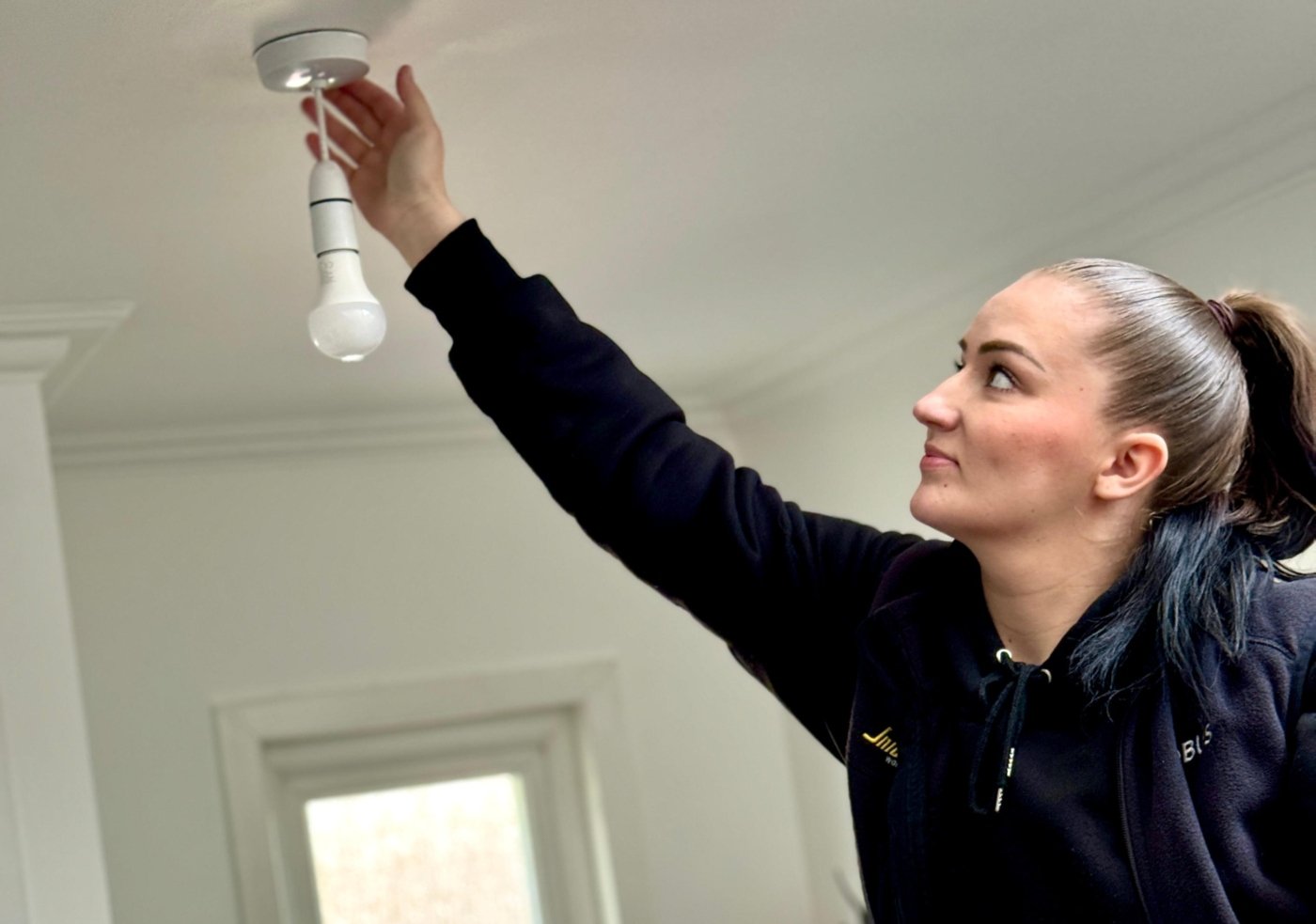Five things to consider when rewiring a property
Rewiring a property can be essential for ensuring safety and efficiency as over time, wiring installations can degrade, increasing the risk of power failures and electrical fires. But what are the key signs that a property needs to be rewired, and what cables should you use? Here are five things to consider when it comes to rewiring:
- Sensory signs
If a homeowner or landlord makes enquiries about flickering lights, strange buzzing sounds or the smell of burning plastic on their premises, it may be a sign that the building needs a full or partial rewire. These occurrences could indicate problems such as loose connections or overloaded circuits and should be investigated.
Prysmian ambassador Kimmy the Sparks explores these issues in more detail in her video and discusses additional signs that indicate a house may need rewiring. Watch the full video on her channel.
- Core colours
Checking the colours of the core insulation is a good indicator of how old the wiring installation may be. The colours used to identify the conductors were harmonised in 2006, although these new colours were allowed to be used in installations from 2004. So, if the core colours are black and red then it was installed before 2006 and could be decades old. If the conductors are blue and brown, then the installation was carried out after 2004. Whilst it is not a requirement to rewire a property just because of the colours of the conductors, it is essential that all new installations use the new colours as set out in the current version of BS 7671.
- Rubber, lead and fabric cables
One of the most significant signs Kimmy the Sparks highlights is the presence of Vulcanised India Rubber (VIR), lead or fabric-sheathed cables, which were commonly installed in older properties between the 1900s to mid-1950s. The sheaths tend to become brittle over time and crumble, exposing the bare conductor, increasing the risk of fire or electric shock.
- Aluminium conductors
Copper conductors are the standard for domestic wiring, however between the 1950s to 1970s, aluminium conductors were used as it was a cheaper alternative to copper. Although aluminium is a good electrical conductor, its use in domestic wiring installations is no longer advised as it tends to overheat – damaging the insulation, increasing oxidation rate of the metal and also fracture and creep. Creep occurs when metal expands and contracts with temperature fluctuations over time, resulting in loose connections increasing the risk of fire. These old cables with aluminium conductors were marked by the letters ‘AL’ on the sheath.
- Identifying the right cable to use
Rewiring a property with high-quality, reliable and compliant cables ensures consistency, efficiency and safety. Twin and Earth cables (also known as T&E or 6242Y) are typically used to distribute power to mains sockets and lighting circuits in homes and are available in a range of conductor sizes. If your project is to rewire a property in a tower block, council house development, or an office, then you should consider installing 6242B – a low smoke zero halogen variation of the T&E cable. 6242B is designed to reduce the risk of smoke and toxic acid gas produced in the event of a fire, allowing building occupants to exit the building more safely.
Prysmian Twin and Earth cables have been manufactured in the UK for many years and are fully compliant with the latest British Standards to deliver exceptional performance for both domestic and light commercial installations. Our T&E cables meet British Standard BS 6004, which specifies the requirements and test methods for the construction and performance of cables that have PVC insulation of rated voltage 300/500 V – ensuring the highest standards.
Issues such as flickering lights and burning smells, as previously mentioned, could be a sign of an overloaded circuit. When it comes to upgrading the wiring, it is important to ensure that the right size cable is used in the installation to help prevent this overload. The Prysmian cable calculator tool, CableApp can help you choose the correct conductor size. CableApp is designed to give electricians fast, precise cable solutions and is fully compliant with the latest wiring regulations including BS 7671 (18th Edition).
In summary, rewiring a property can be crucial for maintaining safety and compliance. Identifying the warning signs associated with outdated wiring and replacing faulty wiring with high-quality, compliant cables from Prysmian, ensures a safer and more reliable electrical wiring installation.
If you want to see more content from Kimmy the Sparks, you can follow her on Instagram or TikTok (@kimmythesparks) or check out her YouTube channel: www.youtube.com/@kimmythesparks.



